We begin, like life, at the beginning. But was it with a chicken, or eggs? Eggs, of course.
Usually my photos are grouped by date, but in this case I've made an exception in order to give a full spectrum of lady bug development.
We begin, like life, at the beginning. But was it with a chicken, or eggs? Eggs, of course.

Nearly-developed buggies. Unfortunately, the leaf that the eggs were on fell on the ground, and many of the babies were damaged in the process. The white ones may be more immature or they may be the result of unfertilized lady bug eggs, which apparently help provide food for the newly-hatched youngsters.
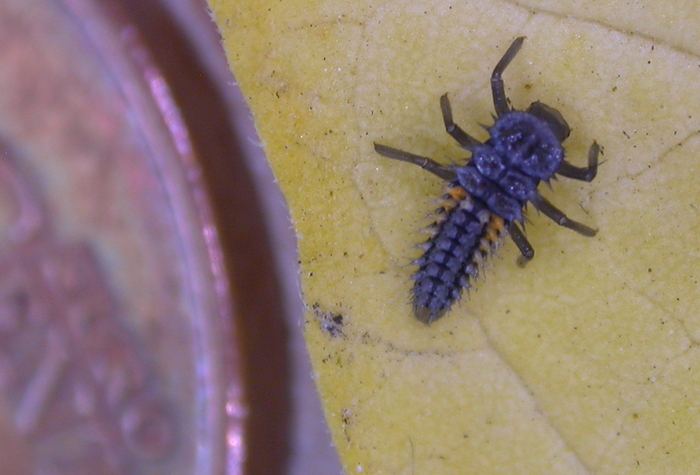
At least one made it, though! This little one has just shed his skin to become the next size up. That's a five-eurocent piece on the left: approximately the size of a US penny. I think baby lady bugs are about the neatest-looking critter in the yard.
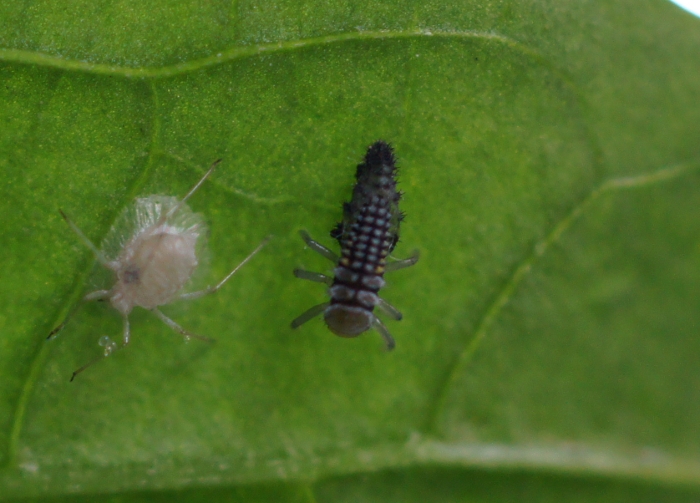
This year, I noticed this little lady with unusual light coloring. The lady is the one on the right, to the left is the discarded skin of an aphid. In the photo you could see that the reason for the lady's light color is that it had just shed its skin. You can still see the old skin unfurling from around its tail.
A lady family from 2010, with empty egg shells.
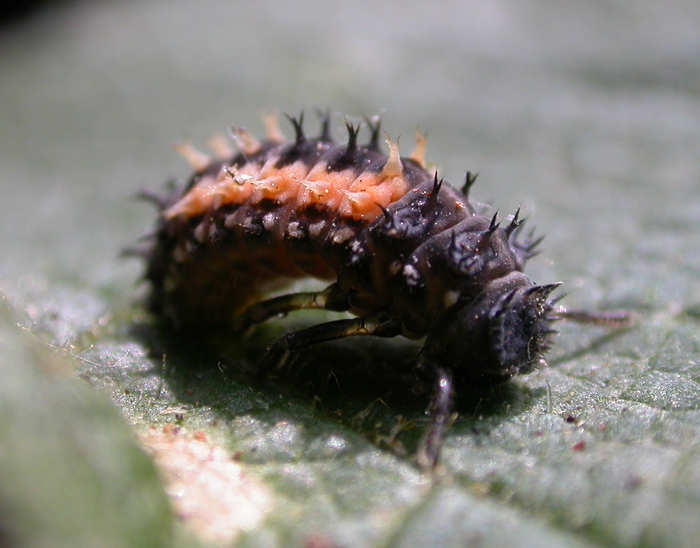
After that, they stick their tails down to a leaf. They are quite vulnerable at this stage. I found this one being knawed on by one of its breatheren! I pulled off the not-so-nice ladybug and gave it its own plant.
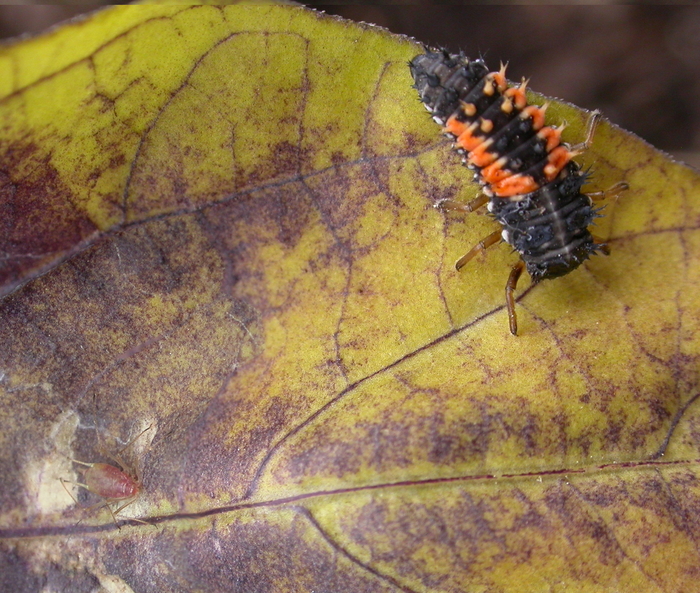
I figured it must be hungry to attack one of its own kind. So I put it on a leaf near some proper lady bug food: aphids.
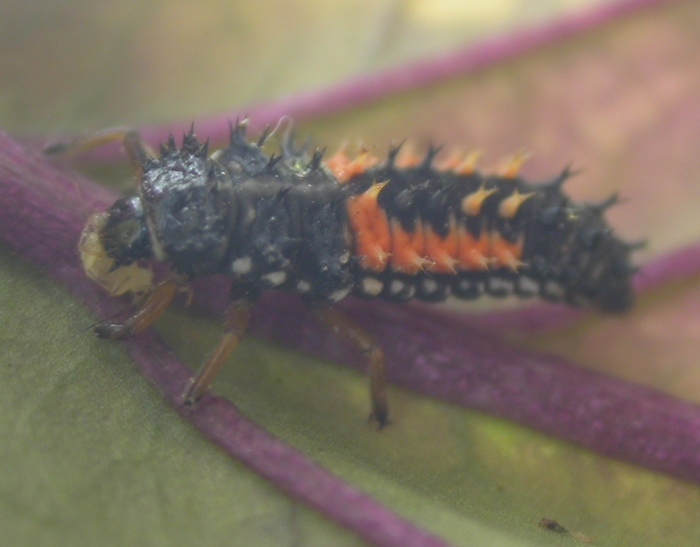
Sure enough, about 10 minutes later I went looking for him and found him on the underside of a leaf, making short work of one of the aphids.
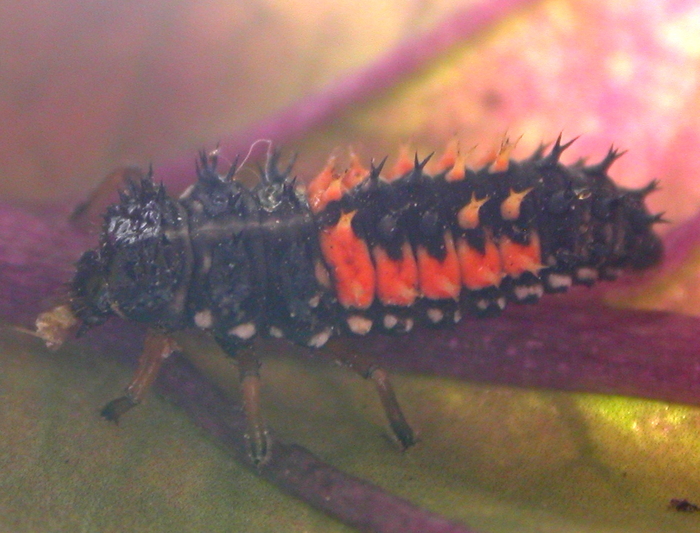
... and I do mean short. About 5 minutes later the aphid was nearly gone. One ladybug can eat 5000 aphids in its lifetime.
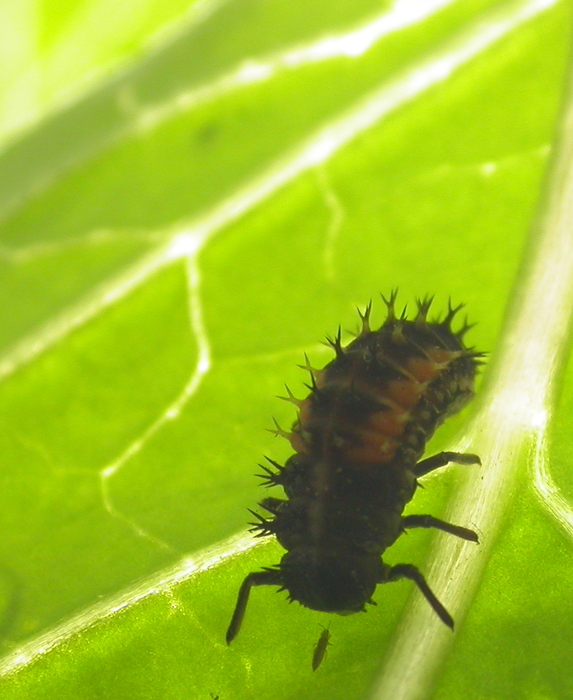
Meanwhile, the other bug seems to have recovered. I really like the way this photo shows the spikes.
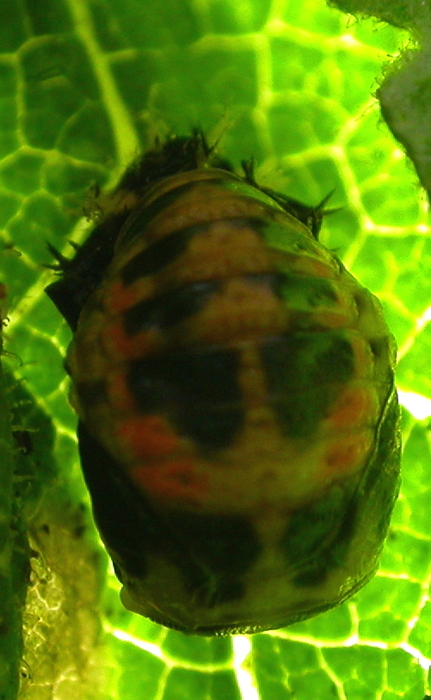
I placed the leaf in easy view, in hopes of getting some pictures of the ladybug pupating. At noon today I had to leave for school, so I checked on the ladybug. Sure enough, it was still a spiky little larva, stuck to its leaf. At 4:00 I came home from school to check on it again, and found that it was completely encased in its pupa! These little guys do everything fast. I'm keeping a close eye on my other babies, though, in hopes of catching one of them in the act.

Despite its resemblence to the adult, this hard shell is just the pupa. A fresh new adult ladybug will hatch out of this in a few days. I have no idea what happens inside, though. It will be interesting to see if the injured one recovers its missing legs in the process.

The only hint is that the spikes all seem to get crammed down to the end that's stuck to the leaf. The ladybug is still aware at this stage. When it gets too warm it will raise the free end up off the leaf to air out a bit.
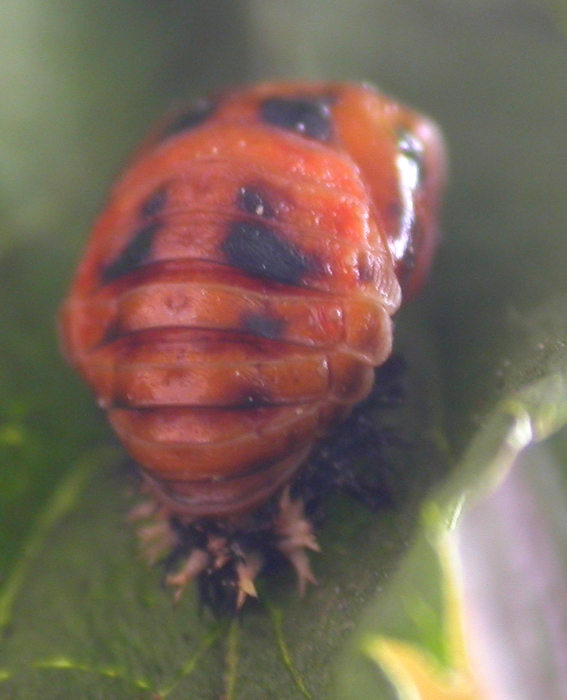
Unlike the babies, though, the markings are different on the pupae. You can tell one individual from another.
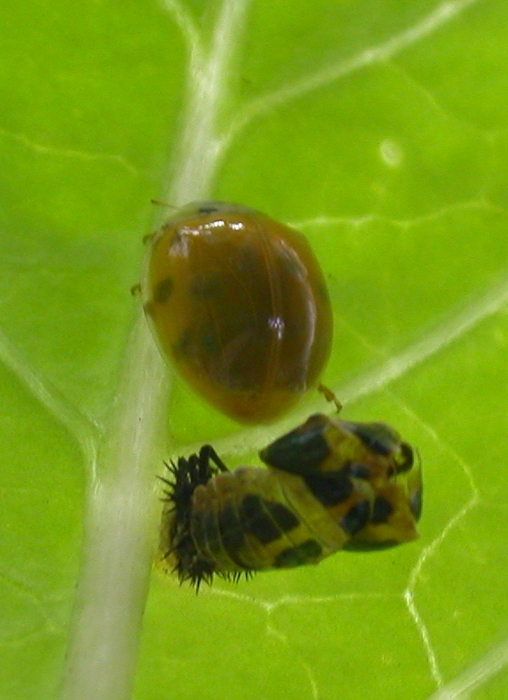
Shortly, the pupa will be left behind. Newly-hatched ladybugs do not have spots - the spots start to show as they dry out.

I got lucky with my babies - they hatched into a variety of colors. That means they are probably japanese ladybugs rather than the native European type, but all are good against aphids. This is the one that hatched from the pupa in dscn0391 above.
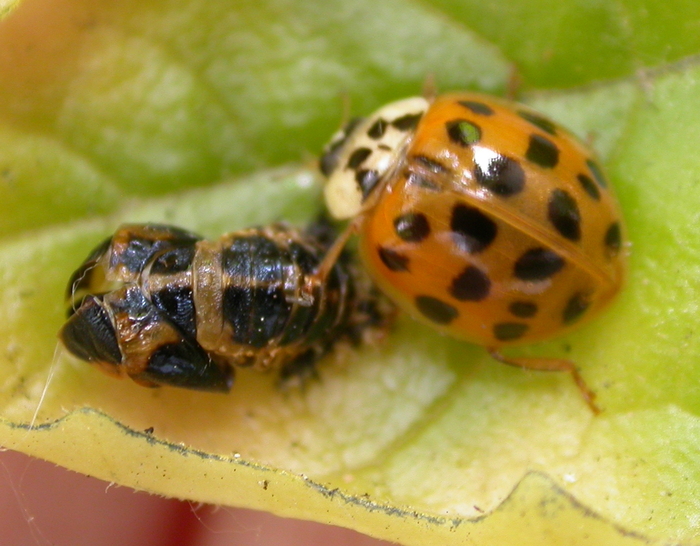
The same ladybug, next to its pupa. This is the same pupa as shown in DSCN0345 above.
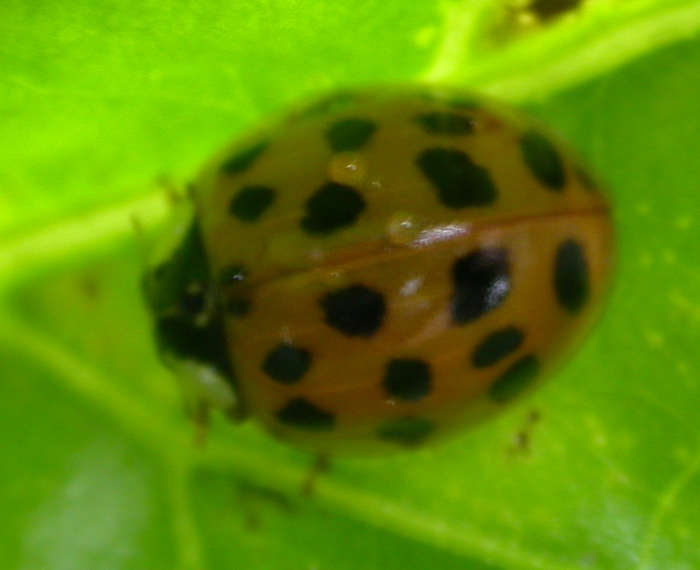
This one, however, is a different ladybug. The pattern of spots is very similar, but there is much more black on this one's head.
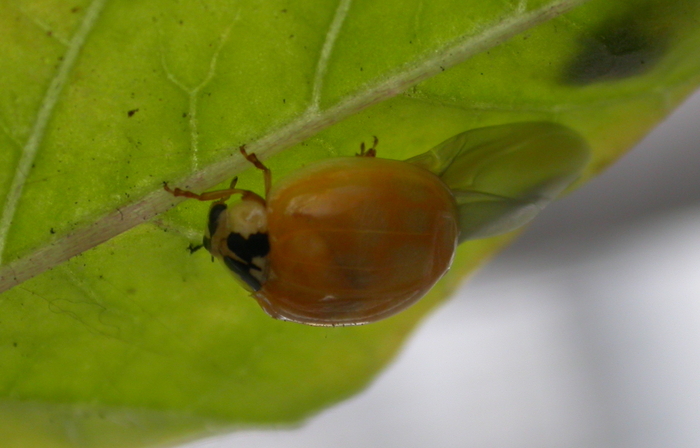
This one, however, is clearly different. Its spots aren't just pale, they're white. It is from the pupa shown in DSCN0349 above.
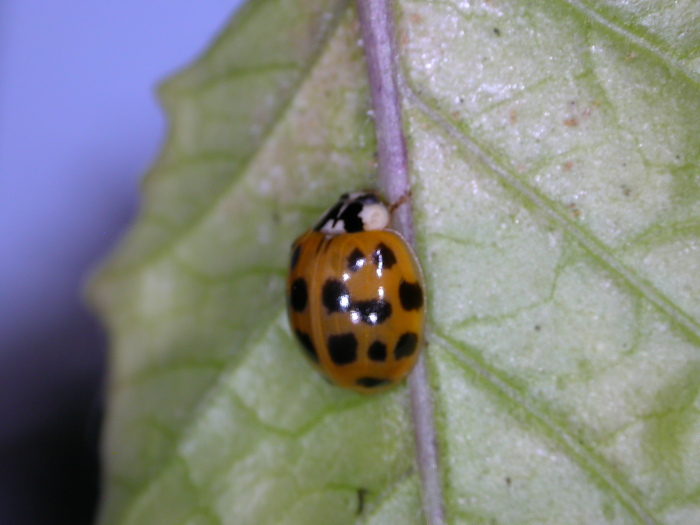
The last of my ladybugs to hatch before I left on vacation. Only Hannibal was left, once again defying conventional behavior by pupating on the fence rather than on a leaf.
In order to see the next set of photos, move the mouse so that the arrow on the screen moves into the blue field that says next page
. The arrow might change into a hand when you do this. Once it's inside the blue field, press the left button on the top of the mouse.
 On to Kansas City bug photos
On to Kansas City bug photos